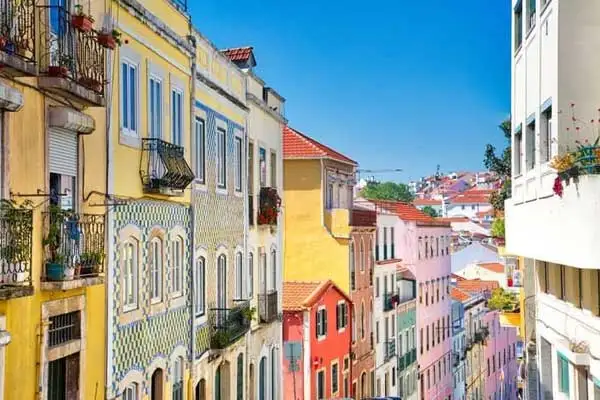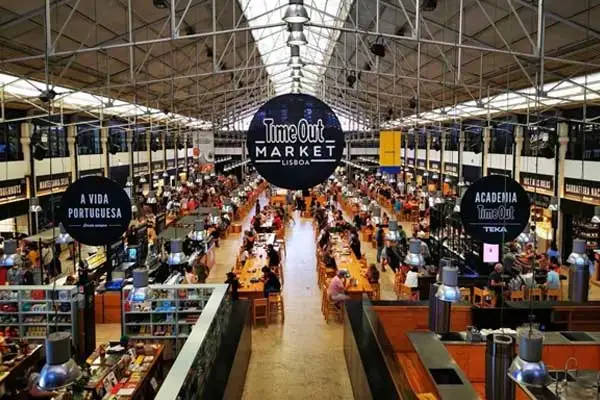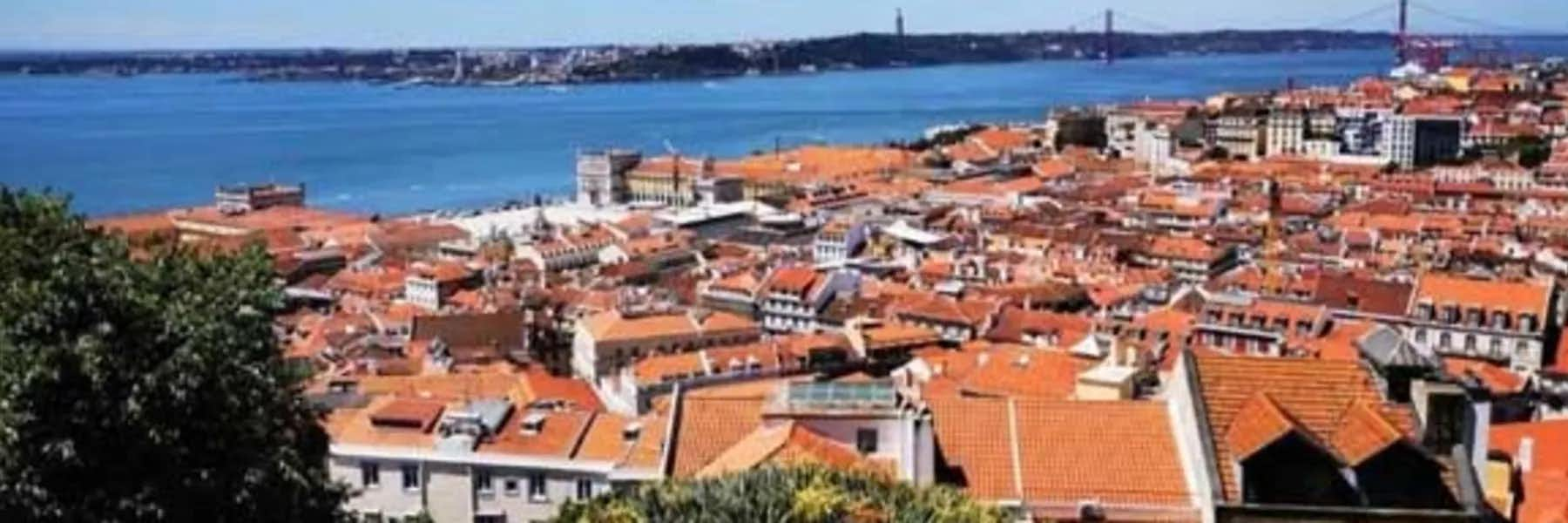The worst café in Lisbon is painted in a style I'd call rejected Jackson Pollock. There are pictures of coffee peeling off the wall. There are no windows. And most available space is taken up with crates of bottled water.
I'm served a watery coffee and a pastel de nata (the famed Portuguese custard tart) with the texture of scrambled egg. The owner is genuinely surprised I want to eat in.
This is Lisbon in June and the busy summer tourist season is in full swing. That means that if you don't want to wait in a queue or put your name on a waitlist, you need to compromise. (It took me a good 30 minutes to find my Pollock jewel.)
Ten years ago, an establishment like this would have been far more commonplace. But today it's the exception. A relic from Lisbon's recent past.
Years of urban regeneration and investment, along with huge tourism growth and a booming tech scene have changed the perception of the Portuguese capital from something of a cultural backwater into an exciting and contemporary European city.
It has a red-hot culinary scene and impressive cultural institutions, including a new world-class museum on the waterfront; the LX Factory district, an old industrial textile complex turned into a creative and artsy village within the city, where trendy cafes, bohemian shops, and art studios occupy abandoned warehouses; and the Time Out Market, one of the world's largest gourmet food venues, where you can eat from a new vendor every day for almost a month.
Get Your Free Portugal Report Today!
Get Your Free Portugal Report Today!
Discover why we love a slower pace of life in Portugal and info on other European countries in our daily postcard e-letter. Simply enter your email address below and we’ll send you a FREE REPORT – Explore the Old World in Laidback Portugal.

By submitting your email address, you will receive a free subscription to IL Postcards and special offers from International Living and our affiliates. You can unsubscribe at any time, and we encourage you to read more about our Privacy Policy.
So, needless to say, one bad pastel de nata wasn't enough to turn me off this place…
Lisbon sits where the River Tagus meets the Atlantic Ocean, on the far western reaches of Europe. It's a city of big skies and big vistas. It's bright and white, set upon seven hills and crowned by a Moorish castle.
For its size, it feels like a village at times. The neighborhood of Alfama is a one-time Arabic area with a warren of alleyways and narrow buildings. The main thoroughfare sees streams of tourists pouring to and from St George's castle. But step into a side street and you'll find clothes drying from windows and people grilling seafood on half-barrels.
There are no skyscrapers here, which makes it feel unusually intimate for a European capital. Buildings are set in crisscrossing layers, no more than four of five stories high, and sporadically painted in ice-cream shades of cherry, peach, blueberry, banana, and orange.

Lisbon's displayed a festival spirit since I arrived a couple of days ago. Not that there's any special event happening. It seems to be just the daily ebb and flow of the city.
Days are a warm 80 F, but a cooling Atlantic breeze keeps it from ever feeling too hot, and the nights are pleasantly balmy.
I've heard Lisbon compared to Havana. The bright colors and party atmosphere certainly bring it to mind, as does the decadence and easygoing pace. There's no rat-race here.
The comparison to Havana also extends, to a certain degree, to Lisbon's cost of living. However, its booming popularity as a tourist city has pushed up costs in recent years.
For instance, a furnished two-bed apartment in the center of Lisbon starts from about €1,500 ($1,598) a month. To buy you're talking €250,000 ($266,447) easy for a two-bed in the center of the city.
Relatively speaking, though, you'll still find good value here. Last night I dined on bacalhau à brás, a local dish of shredded cod and sautéed vegetables that cost me just €12 in a nice central restaurant. My wine was under €3 a glass. And this afternoon’s coffee and pastel de nata—at a nice café this time—set me back just €2.90.
U.S. expat Chris Campbell, an attorney from South Carolina who has been living part-time in Lisbon with his partner since 2015 tell me that there are "international prices" and "local prices."
"For me, and for a lot of Americans, there's the perception that Europe is expensive," he says. "Because the first places that come to mind are places like Milan, London, and Paris. Those places are expensive. But then you find a place like Lisbon and the cost of living is not back-breaking.
"It has a good quality of life, good food, good culture, and pretty much whatever lifestyle you want to live is within an hour or an hour-and-a-half drive. Whether that be the beach, within 15 minutes, or the mountains to the east, about an hour-and-a-half away. And then you have even more beaches if you head south to the Algarve."
"It has good infrastructure, both the healthcare and education as well as the public transport. Plus, it has very low crime."

While Lisbon has been undergoing a long period of redevelopment and gentrification, there are still a noticeable number of decrepit or abandoned buildings in the best downtown neighborhoods.
Historically, a combination of rent controls and rules around inheritance laws acted as an impediment to redevelopment. But since these issues have been mostly dealt with by the proactive government, there are fewer of these abandoned buildings left. And those that remain are very likely earmarked for another co-working space or a hip new culinary experience.
The changing face of the city, combined with its relatively low costs, is attracting a new young breed of international visitor. Just this week Airbnb revealed its top digital nomad destinations for remote working and Lisbon took the number one spot. But its status as a destination for international retirees remains too.
For Chris, there is another important reason why the Portuguese city tops his list. "For me specifically, as a black American, it was the first place I have lived where I don't feel constantly reminded that I'm a big black dude," he laughs.
"It was something I had never felt before. Even if there are problems under the surface, the ideals here are more in line with how I want to live and what I want to bring my family into.
Get Your Free Portugal Report Today!
Get Your Free Portugal Report Today!
Discover why we love a slower pace of life in Portugal and info on other European countries in our daily postcard e-letter. Simply enter your email address below and we’ll send you a FREE REPORT – Explore the Old World in Laidback Portugal.

By submitting your email address, you will receive a free subscription to IL Postcards and special offers from International Living and our affiliates. You can unsubscribe at any time, and we encourage you to read more about our Privacy Policy.
Related Articles
Pros and Cons of Living in Portugal
